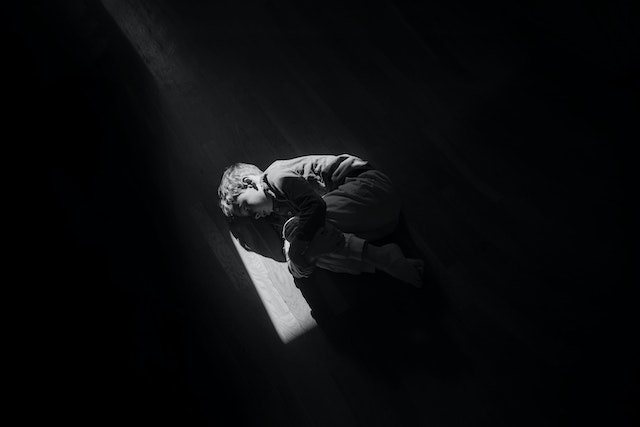Emotional pain is unavoidable. And many are forced to deal with this pain very early in life: the sting of failing, of being let down, of coming face-to-face with real and imagined limitations; the pain caused by bullying and ostracism; grief brought about by the death of a parent or loved one; the suffering of childhood neglect and abuse.
We are resilient beings, and many of life’s challenges can be handled without negative long-lasting effects. But this isn’t a blanket truth. Not all trauma is alike; and not everyone facing difficult challenges has the same relational and internal resources to help them navigate those challenges. The specific type of trauma and the circumstances surrounding painful events make a difference in how we might adapt.
And what happens after difficult periods in one’s life can profoundly impact our ability to effectively cope with these difficulties:
Are we supported and encouraged to talk about what has occurred so that we can begin trying to make sense of what has happened to us?
Are we overwhelmed by the silencing effects of shame, guilt and self-reproach and, as a result, never speak of our underlying pain again?
Does our suffering go unseen by those we desperately need to be supported by and, as a result, our emotional wounds get locked away deep within us?
The flexible, adaptable self
We are often required to adjust our behavior based on the circumstances we face. A simple example is speaking softly (if at all) when at a library or place of worship, compared to how you might act at a concert or sporting event. Different situations pull for different behaviors/emotions and most of the time these self-adjustments are easy and occur without much thought.

And while you may act and feel differently in various situations, who you are, the “essence” of you, doesn’t become inherently or permanently altered. You still know who you are, even when the you that is currently in the forefront might be quite different from the you that exhibited behaviors moments earlier.
It’s as if a core self exists from which these other varied selves (self-states) emerge. Said differently, we all have “different sides” to our personality; the typically quiet and pensive you may shift into a playful or boisterous way of being under the right conditions.
The idea that we are made up of multiple selves rather than a unitary, static, singular self has become a central feature of contemporary psychoanalytic thinking (Benjamin, 2013; Bromberg, 1996; Mitchell, 1993). One view of mental health would emphasize how fluid and integrated these differing self-states are — can we shift from being assertive and self-protective when required, to openness and vulnerability when appropriate? Or do we remain locked into a precautionary way of being even when protection isn’t needed and vulnerability might serve us better?
In this view, the fluidity and integration of our self-diversity is seen as adaptive and beneficial. Being locked into one predominant way of being or not having access to our multiplicity can lead to emotional challenges.
Our ability to have access to these varied (and at times contradictory) self-experiences is not a given and is largely determined by the conditions of our early lives, a time when our primary attachments were being formed and shaping our sense of self.
The self-altering effects of emotional pain
As children, we were constantly teaching our caregivers about ourselves — how to parent us. Our tantrums and protests weren’t just the result of an immature mind railing against limit-setting (though that was certainly a part of our developmental picture). Our childhood-self is initially not a well-protected self.
We were psychologically and emotionally exposed and our tender childhood-self was ripe for being shaped and influenced in ways that may have resonated with the emergence of our “true self” — the conditions in our life nurtured the inherent unfolding of our temperament and burgeoning personality; or we were shaped in ways that derailed our development and brought about a “false self” — a series of personas that were created to protect our fragility.
An essential part of our development centers around our ability to adapt to the world around us — starting with the relational world we exist in with our caregivers. There are myriad ways we’ve had to unconsciously and consciously shape ourselves in order to navigate the realities of our early life. These accommodations of self become problematic when we have no other options but to constrict or shut down the vital parts of ourself for the benefit of the other.
These “pathological accommodations” (Brandchaft, 2007) helped us manage overwhelming anxiety and terror that center around the threat of losing or being rejected by the central figures in our life. As object relations and attachment theories so clearly spell out, maintaining the tie to our caregivers takes primacy at key developmental junctures, even when doing so comes at a significant cost to self.
As children, we will sacrifice ourselves, our vitality, our preferences, our emotions — in essence, what drives us — if doing so keeps us in good standing with those we so desperately depend upon.
The constricted, shrinking self
As these problematic accommodations of self take hold, they become deeply ingrained within us, unspoken rules of being that are so automated and so pervasive that we may never question the manner in which these self-limiting accommodations continue to constrict us.
As adults, we may simply assume, “This is just the way I am…I’ve always been _____ [quiet or shy or unemotional or deferential, or inhibited or depressed…]”. These profound accommodations become internalized as unconscious organizing principles (Stolorow, Brandchaft & Atwood, 1987), inner rules that shape what we can and cannot think, what we can and cannot feel, which behaviors are allowed and which are off-limits.
Early on we learned that to remain safe (emotionally and/or physically), we needed to comply with the mandates of others. We learned to tailor ourselves to the will and influence of our caregivers, those who yielded the power to dictate what is acceptable and unacceptable. Of course, this is a natural part of the maturation process, learning about limits and the impact we have on others. In abusive and neglectful families, however, something ominous is imposed on us, and violating these types of mandates could have grave consequences.
To achieve this end, we must become highly attuned to the desires and whims of the other while we begin to dampen the self-expressions that lead to parental disappointment, anger, withdrawal or abuse. We become experts in self-editing the parts of us that disrupt these primary relationships. Too often, this self-editing turns into self-judgement.
An all-too-common outcome of childhood abuse is that we begin to turn on ourselves, our inner world becomes a police state where certain self-experiences (especially what makes us emotionally vulnerable) become locked away. This self-sequestering becomes increasingly pervasive and far-reaching; we become gradually more unknowable to ourselves and less able to open up emotionally.
As the psychoanalyst Adam Phillips states in his essay, Against Self-Criticism,
“We know almost nothing about ourselves because we judge ourselves before we have a chance to see ourselves.”
As adults, encouragement from loved ones (and from those who are emotionally safe) may do little to impact this internal shutdown. At this point the self-constriction has taken hold and is no longer a means to deal with abusive and neglectful caregivers. It is turned into a way of being.
The parentified child
It would be incorrect, I believe, to think that as parents we do not get certain needs met through our role as parents. Parental expressions of love and affection, feelings of pride about our children’s achievements, and numerous vicarious pleasures gratify us in ways that can be hard to articulate.
The “parentified child” is put in a difficult position. In this dynamic, the child is used as a proxy to take care of the parent(s).
The child learns to repeatedly sacrifice herself, to abandon her own needs and desires, in order to fill the lack that exists in her caregiver.
In this reversal of roles, the child learns that she is needed for her parent’s emotional wellbeing and will find ways to tend to her parent by shelving her own needs.
Some children become very attuned to their caregivers’ unhappiness and unmet longings. When this unhappiness turns into explosive anger, the child learns to hide (literally and psychologically) in order to make themselves smaller and less of a target. The child may become a “problem child” by developing emotional symptoms or behavioral challenges in order to distract their parents from their own suffering or the pain of a failing marriage/relationship.
Whatever shape this tending to the parent might look like, what is necessary from the start is a self-sacrifice in which we learn to unmoor ourselves from our own needs, since these needs get in our way of taking care of the other. This self-constriction, a disconnection from what is vital to ourselves in order to care for the other, creates an internal asymmetry that leans heavily to external attentiveness at the cost of internal attentiveness.
Someone who was parentified as a child may find themselves in relationships as an adult that pull for them to play the role of caregiver, needing to be overly vigilant of the other’s needs for a variety of reasons. For instance, having to be vigilant in order to avoid “setting off” a partner who is easy to anger; or ending up with someone who is self-neglectful and pulls for the other to take care of his/her basic needs.
~~~
There are many childhood circumstances that can lead us to shrink who we are, but what may be common across these circumstances is the need for self-protection, the shielding of the vulnerability that is inherent to our being.
Whether we deny or rail against our vulnerability, it is only by coming face-to-face with it at some point in our life that we can start to identify the self-constrictions that at one time served us well but that are now part of the problem.
Pervasive, cumulative mismatches between what you needed as a child and what your caregivers were able/willing to give; overt abuse and neglect; the terror brought about by a raging parent who causes us to extinguish the capacity for play and spontaneity, two states that are vital to our development. . .these are all conditions that are too common and that leave a lasting imprint on our adult self.
~~~
Rich Nicastro, PhD is a licensed clinical psychologist with twenty-five years experience treating a wide range of psychological and relationship issues. He offers teletherapy to individuals and couples throughout the United States.
Article References
Benjamin, J. Where’s the Gap and What’s the Difference? The Relational View of Intersubjectivity, Multiple Selves, and Enactments, 2013, Contemporary Psychoanalysis, 46, 112-119.
Brandchaft, B. Systems of Pathological Accommodation and Change in Analysis. Psychoanalytic Psychology, 2007, Vol 24, 667-687.
Bromberg, P.M. Standing in the Spaces: The Multiplicity of Self and the Psychoanalytic Relationship, 1996, Contemporary Psychoanalysis, 32, 509-535.
Mitchell, S.A. 1993. Hope and Dread in Psychoanalysis.
Stolorow, R.D., Brandchaft, B., & Atwood, G.E. 1987. Psychoanalytic Treatment: An Intersubjective Approach.





